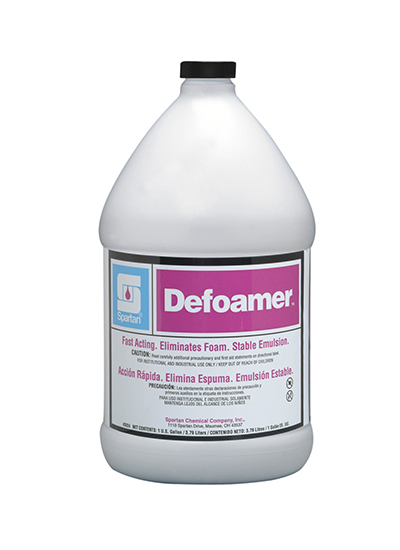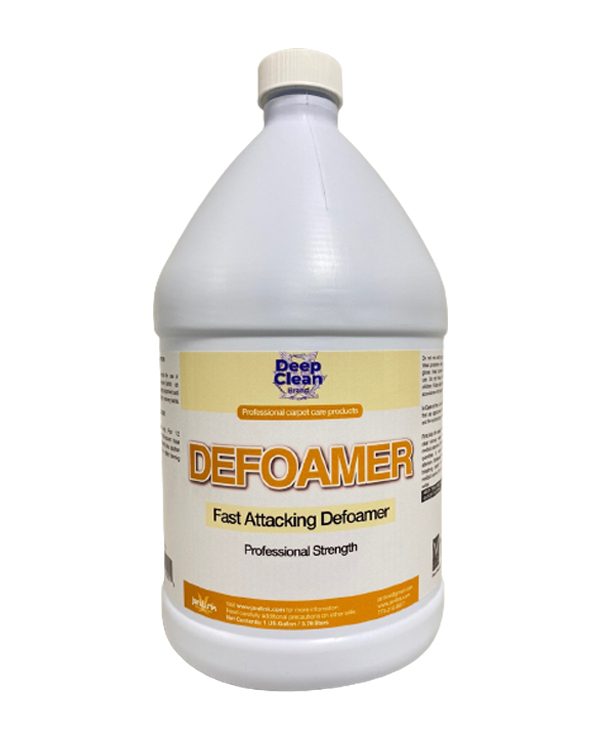Just How a Chemical Defoamer Can Enhance Effectiveness in Your Procedures and Procedures
In today's affordable industrial landscape, operational efficiency is extremely important, and the duty of a chemical defoamer can not be neglected. By resolving foam-related challenges that disrupt processes, defoamers not just assist in smoother operations however also add to set you back savings and improved product quality.
Recognizing Chemical Defoamers
Chemical defoamers play a crucial duty in various commercial processes by efficiently protecting against and lowering foam development. Lathering can lead to operational inefficiencies, enhanced production prices, and jeopardized item high quality. Defoamers are specialized chemical ingredients created to interfere with the security of foam bubbles, therefore enabling smoother handling and boosted performance throughout a number of industries, consisting of food and beverage, drugs, and wastewater therapy.

These representatives normally consist of surfactants, oils, or polymeric compounds that lower the surface tension of the fluid, helping with the collapse of foam. The system whereby defoamers operate commonly involves the destabilization of foam frameworks, enabling quicker water drainage of liquid and the launch of trapped air. Various formulations are customized to specific applications, taking right into account elements such as compatibility with the system, temperature level, and the nature of the liquid being dealt with.
Understanding the make-up and functionality of chemical defoamers is necessary for selecting the proper product for a provided application. By maximizing defoamer selection based upon procedure requirements, markets can enhance operational effectiveness, mitigate foam-related difficulties, and inevitably boost general productivity.
Benefits of Using Defoamers
Using defoamers can dramatically enhance operational effectiveness throughout different sectors by efficiently alleviating foam-related concerns. The presence of foam can interrupt procedures, bring about increased downtime, decreased efficiency, and potential high quality destruction in final result. Defoamers help fight these difficulties by damaging down foam frameworks, therefore permitting smoother procedures.
One of the primary benefits of utilizing defoamers is the reduction of waste and remodel. By lessening foam development, defoamers boost the uniformity of procedures, ensuring that materials are utilized effectively. This not only reduces operational costs but also adds to sustainability efforts by decreasing source intake.
In addition, defoamers can enhance product quality. In making settings, excessive foam can lead to incongruities in product characteristics, influencing consumer contentment. By controlling foam levels, defoamers help keep the wanted physical properties of items.

Applications in Various Industries
The performance of defoamers prolongs throughout a wide range of sectors, where their application addresses specific foam-related difficulties intrinsic to every field. In the food and beverage industry, defoamers are important for maximizing production processes, such as developing and milk handling, where excessive over here foam can impede circulation prices and lower performance. By minimizing foam, these representatives enhance product top quality and uniformity.
In the chemical production field, defoamers are employed in processes like paint production and wastewater treatment. Right here, they avoid foam development that can hinder blending and different stages, therefore boosting the total performance and performance of procedures.
In drugs, defoamers play an essential duty in the formulation of liquid medications, guaranteeing proper dosage and stability by controlling foam throughout blending and storage space. (Chemical Defoamer)
Furthermore, in the agricultural industry, defoamers are utilized in pesticide formulations to boost application performance and lessen waste.
Choosing the Right Defoamer
Selecting the suitable defoamer is important for achieving optimal efficiency in numerous applications. The choice process should start with a detailed understanding of the details problems available, including the kind check these guys out of foam existing, the processing conditions, and the chemical compatibility with various other formula components.
Defoamers are created from a selection of materials, including silicone, mineral oils, and fats. Determining the right make-up is necessary, as different materials display varying performance in varied environments. Silicone-based defoamers are usually favored in high-temperature applications due to their security, while natural defoamers may be a lot more suitable for water-based systems.
In addition, think about the defoamer's effect on the last product. Some More Help formulas can alter the practical or aesthetic buildings, making it crucial to select a defoamer that fulfills product specs without compromising high quality.
Testing is one more critical action in picking a defoamer. Small-scale tests can provide useful insights into the defoamer's efficiency, permitting modifications prior to full-scale application. By meticulously assessing these variables, businesses can improve performance and guarantee that the defoamer successfully fulfills their operational requirements.
Finest Practices for Execution
Implementing a defoamer effectively requires mindful planning and adherence to ideal practices to maximize its effectiveness. Initially, conduct an extensive evaluation of the details application and foam characteristics. Comprehending the kind and source of foam will certainly assist the selection of the most appropriate defoamer formula.
Following, develop the optimum dose (Chemical Defoamer). Start with a small test to establish the minimal effective concentration, as excessive use can lead to unfavorable effects on product quality or operational efficiency
Monitoring and adjusting the application method is important; guarantee that the defoamer is introduced at the best point in the process for maximum impact, such as during blending or quickly after foam development.

Furthermore, keep clear communication with all appropriate personnel to make sure regular application practices and to share insights on efficiency results.
Verdict
In final thought, the use of chemical defoamers plays a crucial duty in enhancing operational efficiency across diverse industries. Ultimately, the consolidation of defoamers into industrial processes fosters reliability and contributes to overall performance enhancement.

In the food and drink industry, defoamers are vital for optimizing production procedures, such as developing and dairy processing, where excessive foam can impede circulation prices and decrease efficiency. Silicone-based defoamers are often preferred in high-temperature applications due to their stability, while organic defoamers may be extra appropriate for water-based systems.